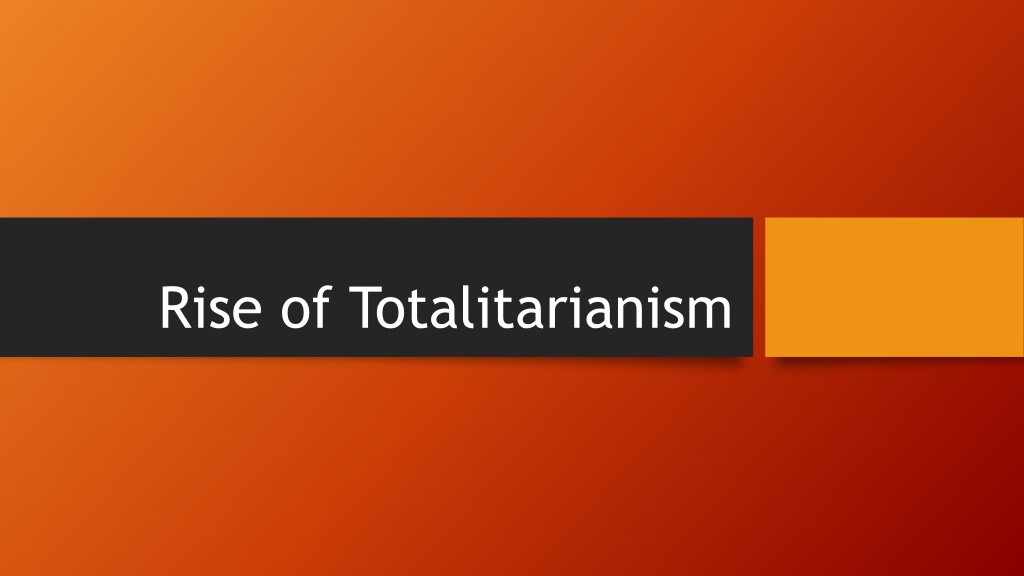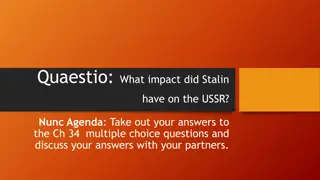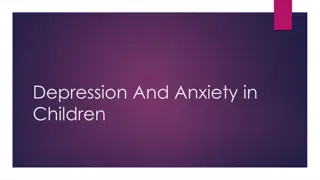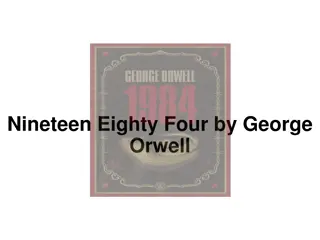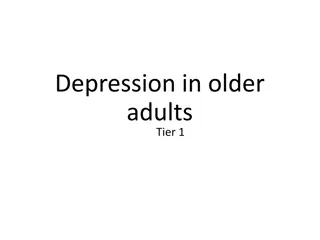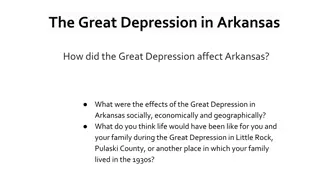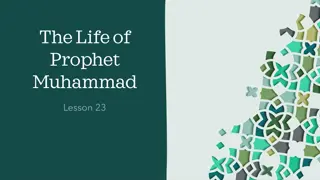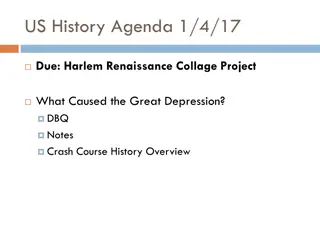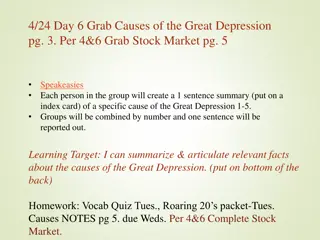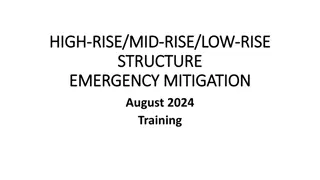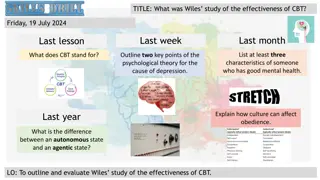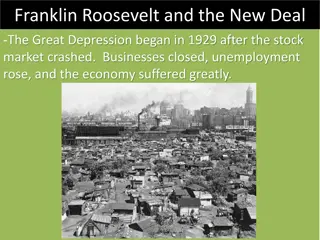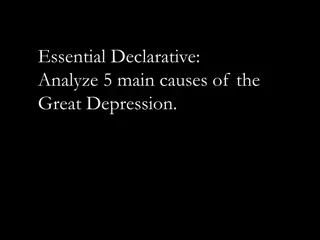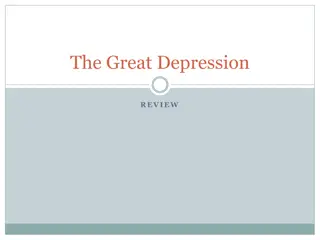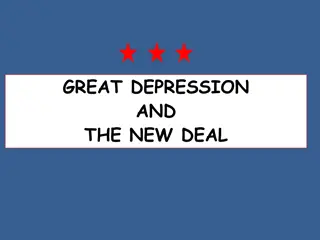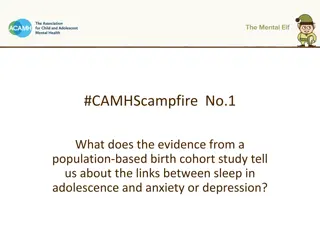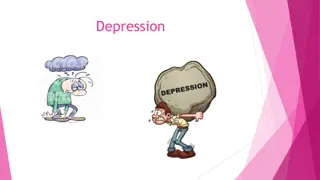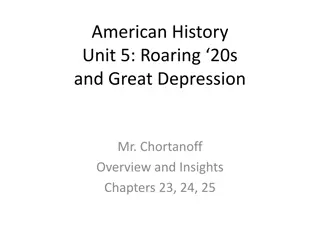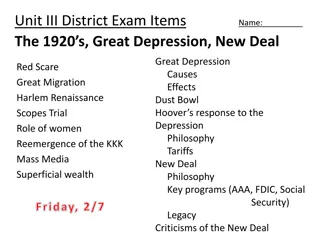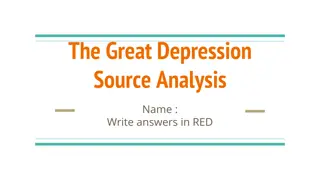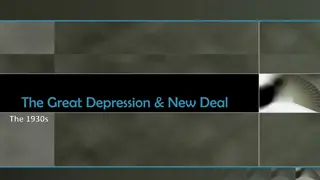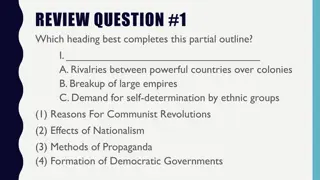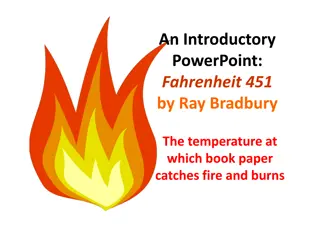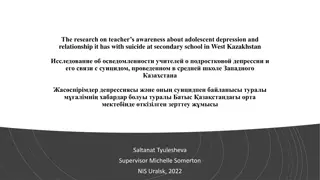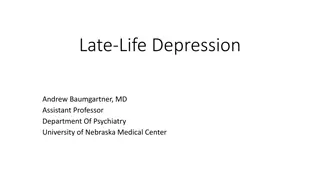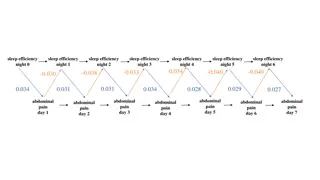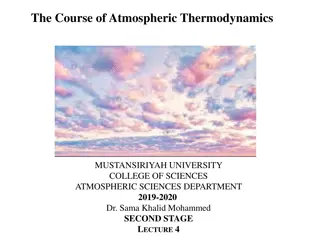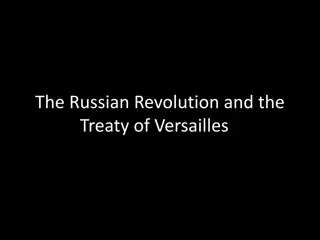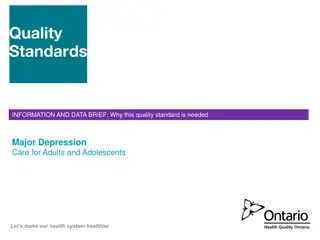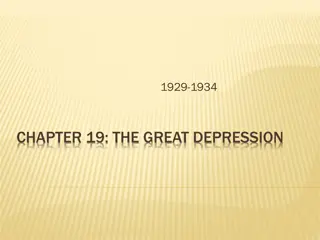The Rise of Totalitarianism: Impact of the Great Depression and Hitler's Ascension
Explore the causes of the Great Depression, the impact of the Treaty of Versailles on Italy and Germany, and analyze how Adolf Hitler came to power in Germany amidst the economic turmoil. Dive into the rise of Fascism in Europe, including Nazism, Mein Kampf, and Hitler's strategies for economic recovery. Understand the significance of key events like the Stock Market Crash of 1929 and Kristallnacht in Hitler's path to power.
Download Presentation

Please find below an Image/Link to download the presentation.
The content on the website is provided AS IS for your information and personal use only. It may not be sold, licensed, or shared on other websites without obtaining consent from the author. Download presentation by click this link. If you encounter any issues during the download, it is possible that the publisher has removed the file from their server.
E N D
Presentation Transcript
Warm Up What is a Fascist Government? Who was the creator of Fascism? How did the Treaty of Versailles impact Italy and Germany?
Homework Chapter 15 Section 4 Assessment: Questions 1-4
Learning Objectives Interpret how the Great Depression impacted different countries Analyze how Adolf Hitler came to power Synthesize Hitler s rise to power through creating a flow chart
The Great Depression- (Causes) Uneven distribution of wealth Overproduction of goods Less demand for consumer products 1929: Stock Market Crash- Everyone begins selling stocks, resulting in a panic, and stocks become worthless
The Great Depression leads to Worldwide Depression https://www.youtube.com/watch?v=_3mFvwLRjc0 1. How did World War I start a worldwide economic depression? 2. How did this worldwide depression lead to the rise of Fascism in countries such as Germany and Italy? 3. What did Hitler do to improve the German economy? 4. What was Stalin s 5 Year Plan and what was its purpose? 5. What was Japan s problem after World War I and how did they decide to solve this?
Chapter 15 Section 3 Write down the definitions of the following terms: a. Nazism b. Fuhrer c. Mein Kampf d. Lebensraum e. Chancellor f. Reichstag g. SS h. Kristallnacht
Hitlers Germany: Flow Chart Make a Flow Chart that describes how Hitler rose to power in Germany Start at the Treaty of Versailles End at Kristallnacht Include pictures with each event that you label to show understanding YOU MUST DO AT LEAST 10 EVENTS Use your vocabulary list to help you
Check for Understanding What do you think was the most significant event that led to Hitler s rise to power? Why?
Warm Up What different solutions did Germany, Italy, Soviet Union, and Japan use to combat the international depression?
Homework Chapter 15 Section 4 Assessment: Questions 1-4
Learning Objectives Analyze the different actions taken by world leaders between World War I and World War II Collaborate with Group Members to form projects on the different world leaders Synthesize differences and similarities between different world leaders and their countries
Group work: World Leaders and Their Policies Group 1: Joseph Stalin- Soviet Union Group 2: Benito Mussolini- Italy Group 3: Adolf Hitler- Germany Group 4: Neville Chamberlain- Great Britain Group 5: Emperor Hirohito- Japan Group 6: Franklin Roosevelt- USA
World Leader Posters You will be making a poster of your world leader which shows: a. Images of the leader b.The flag of the country they were the leader of c. Where in the world the country is (draw a map) d.Their policies and actions e.Their relationship to World War II
Check for Understanding List three different policies/actions/events that happened under each leader a. Stalin b. Mussolini c. Hitler d. Chamberlain e. Hirohito f. Roosevelt
Pair-Share With a partner, write down every fact you already know about World War II
Warm Up What is appeasement? Which countries had a policy of appeasement? How does appeasement relate to World War I?
Looking Ahead Next Week: Test on World War I-Rise of Totalitarianism District Assessment: Appeasement
Pair-Share: Homework With a partner, go over your answer to Question 4 on the homework Brainstorm 10 Pros and 10 Cons of the US becoming an Isolationist Country in the modern day Answer the following question in a paragraph: Should we appease ISIS in the modern day? Why or why not?
Vocabulary list Define the terms, people, and places on the vocabulary list Make sure to include the relevance of these words to the material
Japan 1930: Great Depression hits Military takes control of the government Emperor Hirohito becomes a figurehead a. Figurehead: A leader without any power b. Can you think of any modern day examples of Figureheads ?
Japan invades China (1937) -What have we already learned about China? Japanese attack Manchuria (region in northern China) 1933: League of Nations protests against Japan and Japan leaves the League of Nations - Why didn t the League of Nations stop Japan from invading China? 1937: Japan declares full war against China and invade the Chinese capital of Nanking Jiang Jieshi- leader of Chinese Army Mao Zedong- leader of Chinese Communist rebels
Rape of Nanking Read the article and answer the questions that follow Note: POW s= Prisoners of War
Check for Understanding What is the difference between a war and a genocide?
Review World War I Quizzes What questions do you have about the quizzes?
Study Guides Fill out the Study Guide for the Test next week
